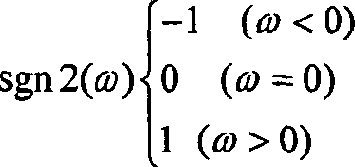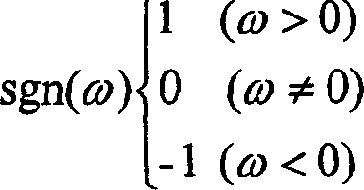Robot arm control method and control device
A manipulator and control mode technology, applied in the direction of manipulators, manufacturing tools, etc., can solve the problems of speed reduction, impossibility of ignoring interference force, etc., achieve the effects of reducing collision energy, improving target following characteristics, and solving deformation problems
- Summary
- Abstract
- Description
- Claims
- Application Information
AI Technical Summary
Problems solved by technology
Method used
Image
Examples
no. 1 example
[0144] FIG. 1 is a block diagram showing a control method of the present invention. In FIG. 1, reference numeral 26 is a velocity converting device, and reference numeral 27 is an angular velocity ω selected by the velocity converting device. The feedback current command I can be obtained in the following manner com (4): command θ from the rotation angle through the feedback controller (2) com (1) and the actual motor rotation angle θ fb A PID calculation is performed and a current limit (3) is performed. Regarding the current limit(3) Way , providing a system in which a limit is set and a system in which a feedback gain is reduced.
[0145] On the other hand, I can be calculated by expression (3) as follows ml (17). When turning the motor rotation command θ com (1) The angular acceleration α obtained when performing differential calculations (12) and (14) twice com (15) multiplied by the motor inertia J(16). Friction torque τμ(20) and dynamic torque τdyn(19) are adde...
no. 2 example
[0156] In the expression (12) showing the conversion of the speed in the first embodiment, at least one of the speed command value and the actual measurement value is multiplied by a weighting coefficient.
[0157] ω = ωfb ( | kcl * ωcom + kc 2 | ≤ | ωfb | ) ωcom ( | kcl * ωcom + kc ...
no. 3 example
[0162] Fig. 2 is a block diagram showing a control method of the third embodiment.
[0163] is input to the actual angular velocity ω of the velocity conversion device (26) fb (23) Multiplied by the friction compensation rate kμ.
[0164] It is expressed by Expression (15) as follows.
[0165] ω = k μ * ωfb ( | kcl * ωcom + kc 2 | ≤ | ωfb | ) ωcom ( | ...
PUM
 Login to View More
Login to View More Abstract
Description
Claims
Application Information
 Login to View More
Login to View More - R&D
- Intellectual Property
- Life Sciences
- Materials
- Tech Scout
- Unparalleled Data Quality
- Higher Quality Content
- 60% Fewer Hallucinations
Browse by: Latest US Patents, China's latest patents, Technical Efficacy Thesaurus, Application Domain, Technology Topic, Popular Technical Reports.
© 2025 PatSnap. All rights reserved.Legal|Privacy policy|Modern Slavery Act Transparency Statement|Sitemap|About US| Contact US: help@patsnap.com



